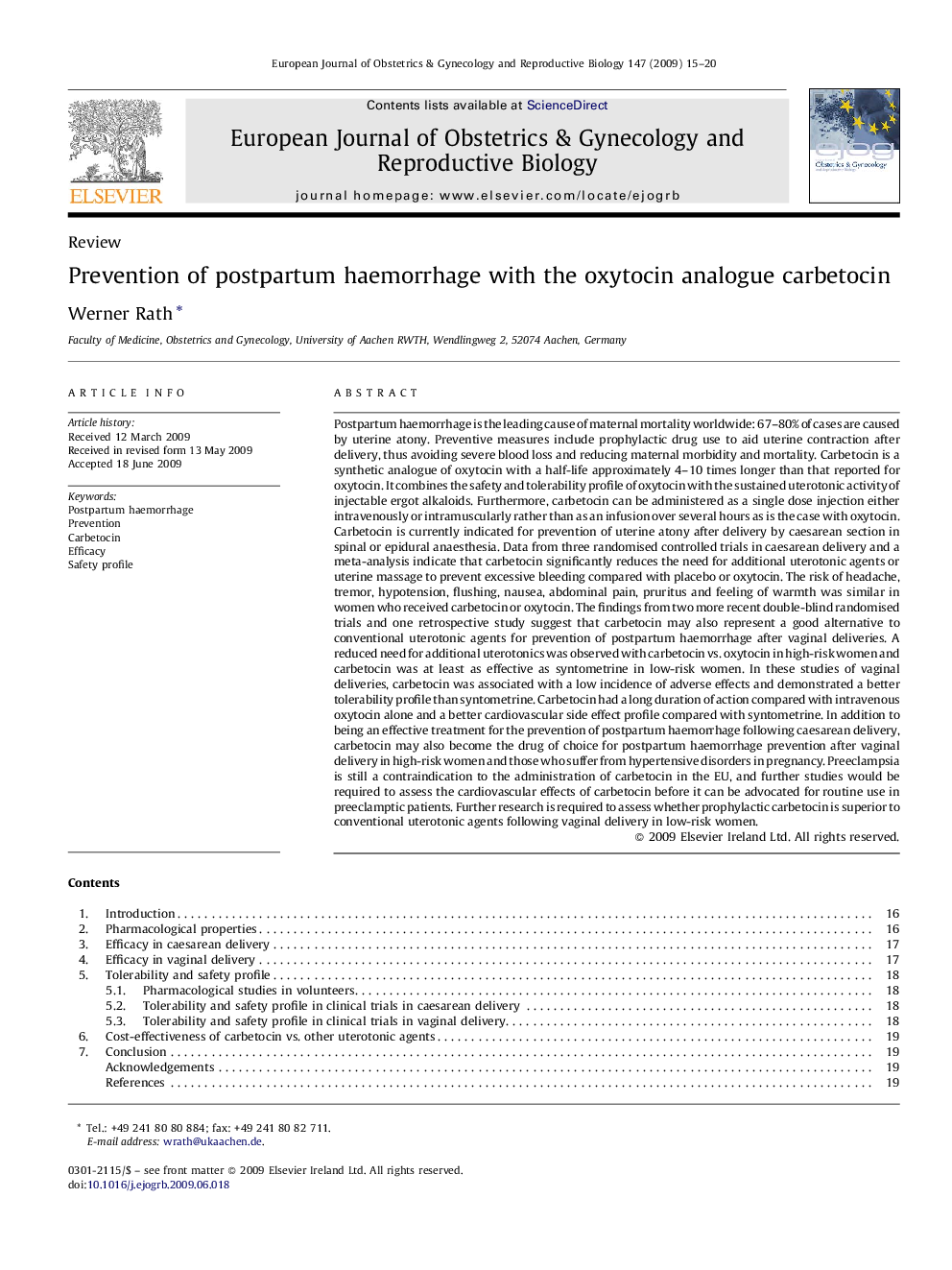| کد مقاله | کد نشریه | سال انتشار | مقاله انگلیسی | نسخه تمام متن |
|---|---|---|---|---|
| 3921446 | 1599859 | 2009 | 6 صفحه PDF | دانلود رایگان |

Postpartum haemorrhage is the leading cause of maternal mortality worldwide: 67–80% of cases are caused by uterine atony. Preventive measures include prophylactic drug use to aid uterine contraction after delivery, thus avoiding severe blood loss and reducing maternal morbidity and mortality. Carbetocin is a synthetic analogue of oxytocin with a half-life approximately 4–10 times longer than that reported for oxytocin. It combines the safety and tolerability profile of oxytocin with the sustained uterotonic activity of injectable ergot alkaloids. Furthermore, carbetocin can be administered as a single dose injection either intravenously or intramuscularly rather than as an infusion over several hours as is the case with oxytocin. Carbetocin is currently indicated for prevention of uterine atony after delivery by caesarean section in spinal or epidural anaesthesia. Data from three randomised controlled trials in caesarean delivery and a meta-analysis indicate that carbetocin significantly reduces the need for additional uterotonic agents or uterine massage to prevent excessive bleeding compared with placebo or oxytocin. The risk of headache, tremor, hypotension, flushing, nausea, abdominal pain, pruritus and feeling of warmth was similar in women who received carbetocin or oxytocin. The findings from two more recent double-blind randomised trials and one retrospective study suggest that carbetocin may also represent a good alternative to conventional uterotonic agents for prevention of postpartum haemorrhage after vaginal deliveries. A reduced need for additional uterotonics was observed with carbetocin vs. oxytocin in high-risk women and carbetocin was at least as effective as syntometrine in low-risk women. In these studies of vaginal deliveries, carbetocin was associated with a low incidence of adverse effects and demonstrated a better tolerability profile than syntometrine. Carbetocin had a long duration of action compared with intravenous oxytocin alone and a better cardiovascular side effect profile compared with syntometrine. In addition to being an effective treatment for the prevention of postpartum haemorrhage following caesarean delivery, carbetocin may also become the drug of choice for postpartum haemorrhage prevention after vaginal delivery in high-risk women and those who suffer from hypertensive disorders in pregnancy. Preeclampsia is still a contraindication to the administration of carbetocin in the EU, and further studies would be required to assess the cardiovascular effects of carbetocin before it can be advocated for routine use in preeclamptic patients. Further research is required to assess whether prophylactic carbetocin is superior to conventional uterotonic agents following vaginal delivery in low-risk women.
Journal: European Journal of Obstetrics & Gynecology and Reproductive Biology - Volume 147, Issue 1, November 2009, Pages 15–20